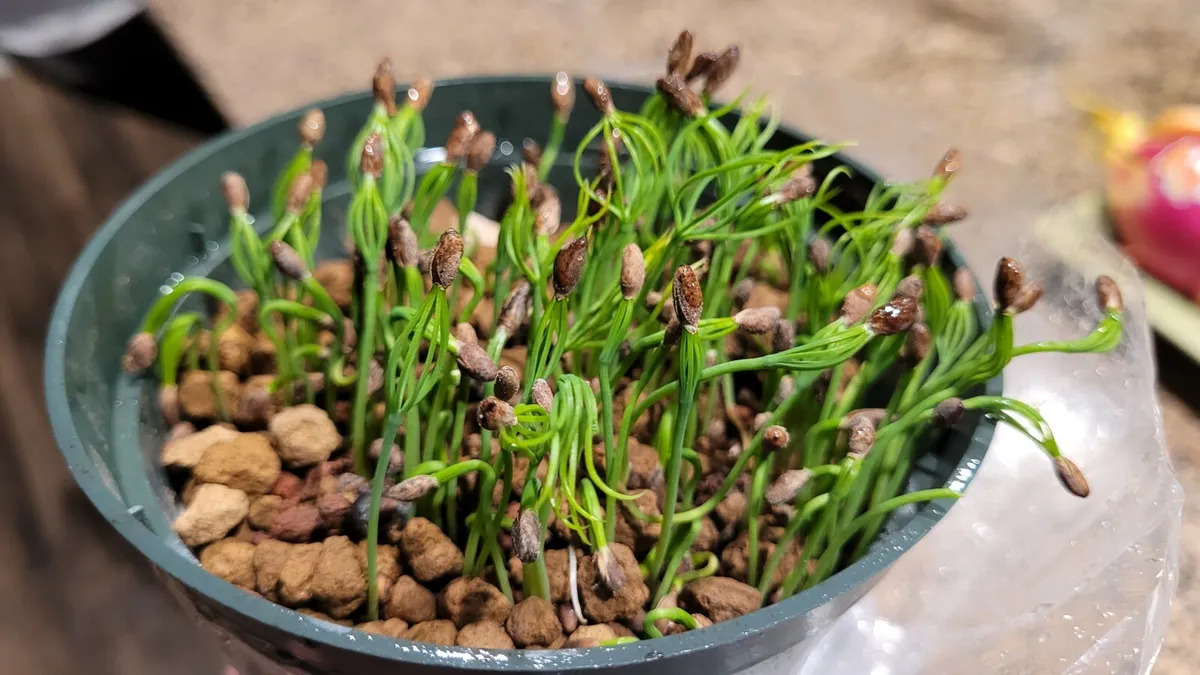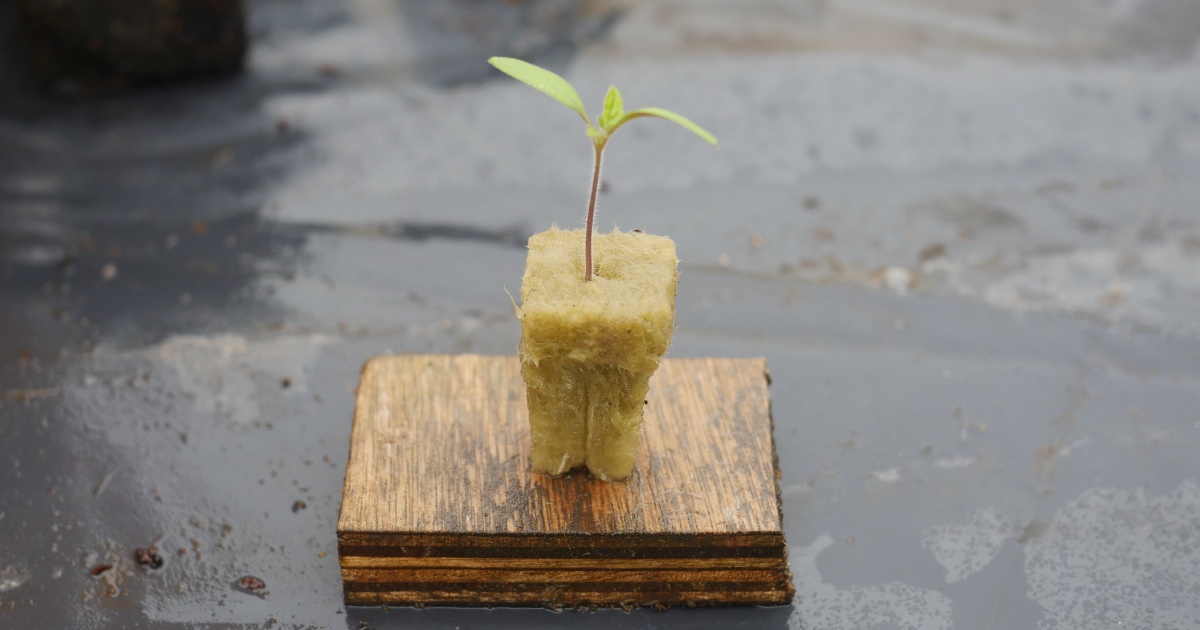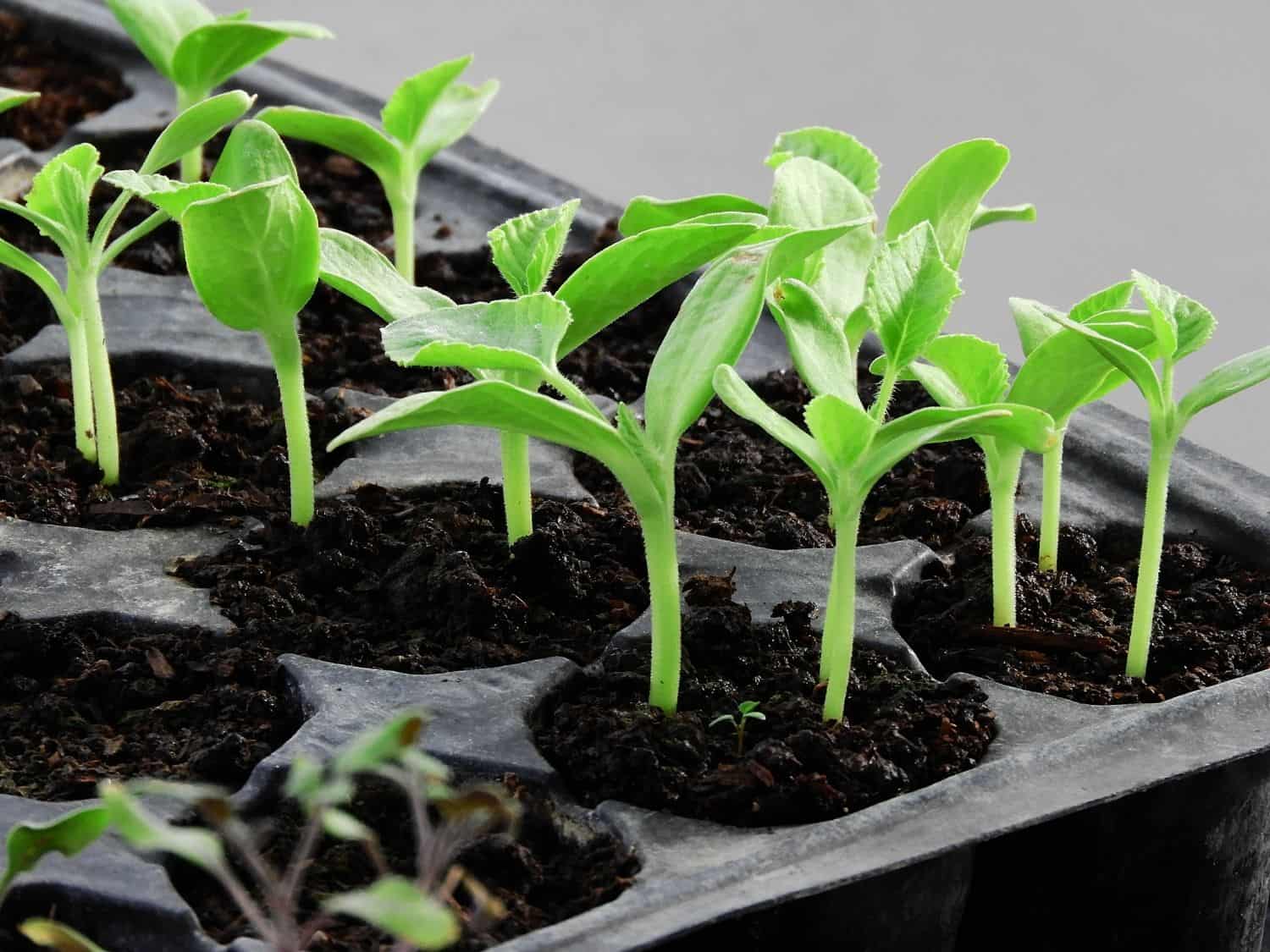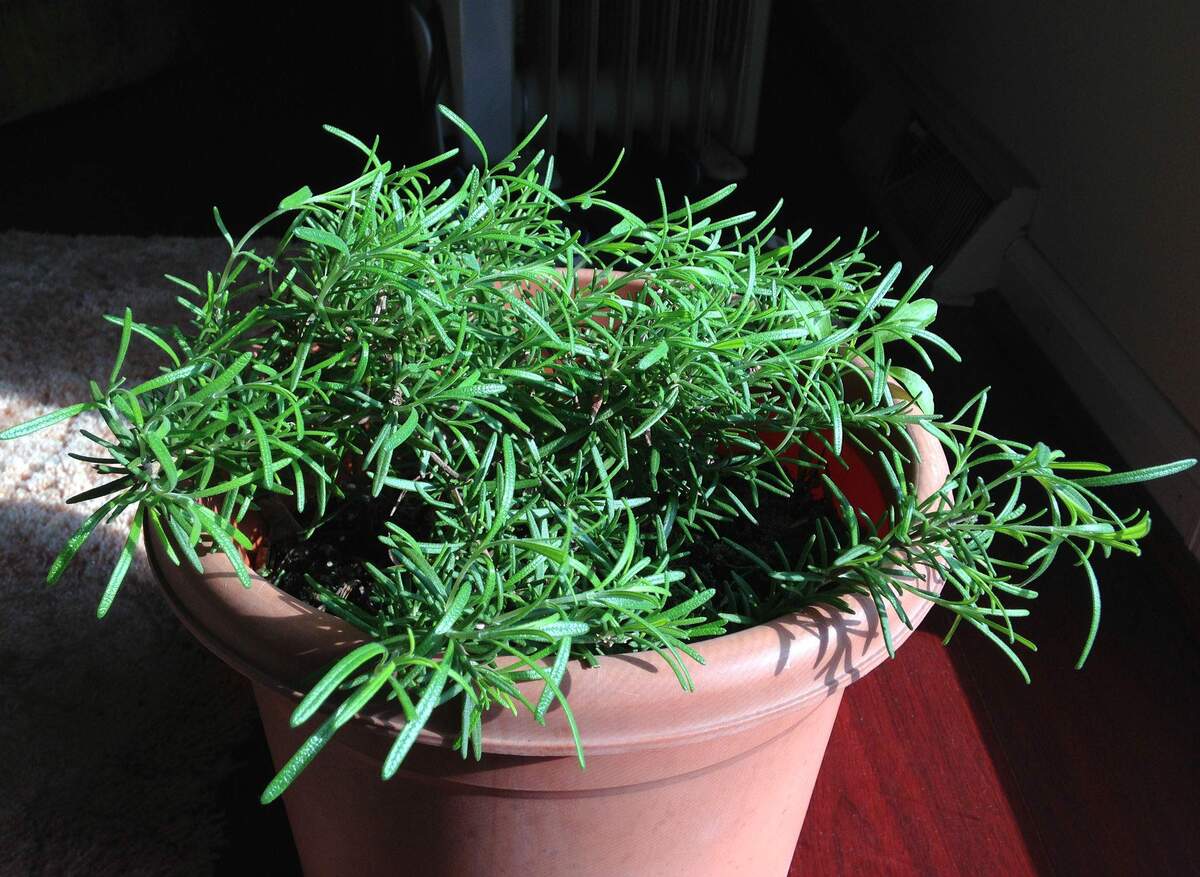Home>Gardening Techniques>Plant Care>How To Care For Succulents Outdoors
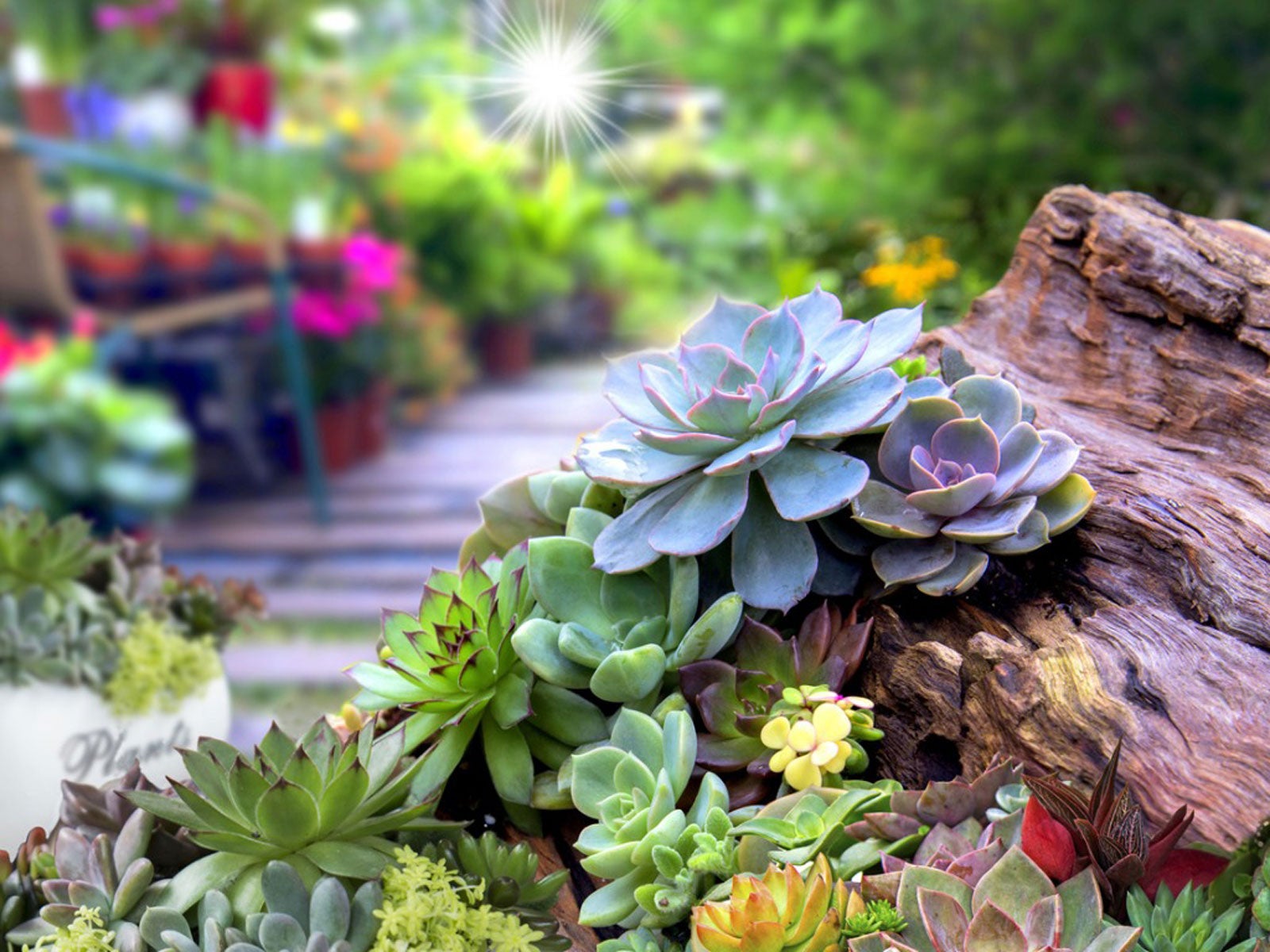

Plant Care
How To Care For Succulents Outdoors
Modified: February 9, 2024
Discover essential tips for outdoor succulent care in this comprehensive guide. Learn how to properly care for your succulents and ensure their health and longevity.
(Many of the links in this article redirect to a specific reviewed product. Your purchase of these products through affiliate links helps to generate commission for Chicagolandgardening.com, at no extra cost. Learn more)
Table of Contents
Introduction
Welcome to the wonderful world of succulents! These fascinating plants have gained tremendous popularity in recent years, and for good reason. With their unique shapes, vibrant colors, and low-maintenance nature, they make the perfect addition to any outdoor space.
Whether you’re a seasoned gardener or just starting your green thumb journey, caring for succulents can be a rewarding experience. These hardy plants are known for their ability to store water in their leaves, stems, and roots, making them well-suited to survive in dry and arid conditions.
In this article, we’ll explore the essentials of outdoor succulent care, from choosing the right location to preventing overwatering and protecting them from extreme temperatures. We’ll also delve into maintaining soil health, fertilizing to promote growth, dealing with pests and diseases, as well as pruning and propagating succulents to expand your collection.
By the end of this article, you’ll have the knowledge and confidence to create a thriving succulent garden that will be the envy of your neighbors. So, let’s dive in and learn how to care for succulents outdoors!
Selecting the Right Location
When it comes to growing succulents outdoors, selecting the right location is crucial for their overall health and vitality. Here are some key factors to consider:
- Sunlight: Succulents thrive in bright sunlight, so choose a spot that receives at least 6 hours of direct sunlight per day. Keep in mind that different species have varying light requirements, so it’s essential to know the specific needs of your succulents. If you live in an area with intense afternoon sun, consider providing some shade during the hottest part of the day.
- Air Circulation: Good air circulation is essential for preventing moisture buildup and minimizing the risk of mold and fungal diseases. Avoid placing succulents in areas with stagnant air, such as narrow corners or enclosed spaces. Instead, opt for locations with gentle breezes that can help keep the plants dry and healthy.
- Protection from Harsh Elements: While succulents are known for their ability to withstand challenging conditions, extreme weather can still take a toll on them. It’s important to select a location that offers some protection from strong winds, heavy rain, or frost. Consider placing succulents near walls, under the eaves of a building, or in areas shielded by larger plants to provide a buffer against harsh elements.
- Well-Draining Soil: Although this is technically related to soil composition, it is important to consider when selecting the location. Succulents require well-draining soil to prevent root rot and other water-related issues. If your garden soil is heavy and retains water, consider creating raised beds or using containers to ensure proper drainage.
By taking these factors into consideration, you can create an ideal growing environment for your succulents. Keep in mind that different succulent species have different preferences, so it’s always a good idea to research the specific needs of your plants and adjust the location accordingly. Now that we have covered selecting the right location, let’s move on to the next important aspect of succulent care: providing adequate sunlight.
Providing Adequate Sunlight
Adequate sunlight is crucial for the healthy growth and development of succulents. These plants have evolved to thrive in arid environments with plenty of sunlight. Here are some important considerations when it comes to providing enough light for your succulents:
- Direct Sunlight: Most succulents prefer bright, direct sunlight for several hours each day. Place them in a location where they will receive at least six hours of direct sunlight, preferably in the morning or late afternoon. However, it’s important to note that some succulents, such as Haworthias and Gasterias, can tolerate more shade and should not be exposed to intense sunlight for extended periods. Pay attention to the specific light requirements of your succulent species.
- Indirect Sunlight: If you live in an area with extremely hot or intense sunlight, it may be necessary to provide some indirect sunlight or partial shade for your succulents. This can be achieved by placing them under a shade cloth or providing natural shade from larger plants or structures. Moderate exposure to indirect sunlight can help prevent sunburn and heat stress.
- Rotate Succulents: To ensure even growth and prevent plants from leaning toward the light source, it’s beneficial to rotate your succulents every few weeks. This will help promote balanced growth and prevent one side of the plant from receiving more sunlight than the other.
- Monitor for Sunburn: Despite their ability to tolerate sunlight, some succulents can still experience sunburn if exposed to intense light without acclimation. Signs of sunburn include brown or reddish patches on the leaves. If you notice sunburn, gradually acclimate your succulent to direct sunlight by slowly exposing it to increasing amounts of light over several days or weeks.
In summary, providing adequate sunlight is crucial for the overall health and well-being of succulents. Remember to consider the specific light requirements of your succulent species, and make adjustments as needed to ensure they receive the right amount of sunlight. With proper sun exposure, your succulents will thrive and display their vibrant colors and unique forms.
Watering Properly
Proper watering is essential for the health and longevity of succulents. The misconception that succulents don’t need much water is a common mistake. While they are adapted to survive in arid conditions, they still require regular watering. Here are some guidelines for watering your succulents:
- Water Deeply: When you water your succulents, it’s important to give them a good soak. Water the soil until it is completely saturated and water drains out of the bottom of the pot. This ensures that the water reaches the roots and encourages proper growth. However, be sure to allow the soil to dry out completely between waterings to prevent overwatering.
- Water from the Bottom: To prevent water from sitting on the leaves and causing rot or disease, it’s best to water succulents from the bottom. Place the pot in a shallow tray filled with water and allow the plant to absorb water through the drainage holes. Once the soil is moist, remove the pot from the tray and allow any excess water to drain out.
- Adjust Watering Frequency: The frequency of watering will depend on various factors such as the climate, temperature, and humidity levels. During the hotter summer months, succulents may need more frequent watering, while in cooler months, they may require less. Monitor the moisture level of the soil and adjust your watering schedule accordingly.
- Water During Active Growth: Succulents have periods of active growth and dormancy. It’s important to water them more frequently during their active growth phase, which is typically in spring and summer. During dormancy, usually in fall and winter, succulents require less water as they go into a period of rest.
- Avoid Overwatering: Overwatering is the most common cause of succulent problems. It can lead to root rot, wilting, and even death. To avoid overwatering, always check the moisture level of the soil before watering. If the soil feels damp or moist, hold off on watering until it dries out. Remember, succulents are adapted to survive in dry conditions and can store water in their leaves and stems.
By following these guidelines, you can ensure that your succulents receive the right amount of water and thrive in your outdoor space. Remember, it’s better to underwater than overwater, so always err on the side of caution. Understanding the watering needs of your succulents will help you maintain their health and beauty for years to come.
Preventing Overwatering
Overwatering is one of the most common mistakes made when caring for succulents. These plants are adapted to survive in arid conditions and can store water in their leaves, stems, and roots. Here are some essential tips to prevent overwatering your succulents:
- Use Well-Draining Soil: One of the key factors in preventing overwatering is using a well-draining soil mix specifically formulated for succulents. This type of soil allows excess water to drain away quickly, preventing waterlogged roots. You can purchase pre-made succulent soil or make your own by combining regular potting soil with coarse sand and perlite.
- Water Infrequently: Succulents have the ability to tolerate dry conditions, so it’s best to water them infrequently. Only water when the soil is completely dry to the touch, usually about one to two inches down. It’s better to underwater than overwater, as succulents can bounce back from temporary drought stress, but overwatering can quickly lead to root rot and other issues.
- Avoid Standing Water: Succulents do not like to sit in standing water, as this can lead to root rot. Make sure that your pots have drainage holes to allow excess water to escape. After watering, be sure to discard any water that collects in the saucer or tray underneath the pot.
- Monitor Weather Conditions: Adjust your watering schedule based on the weather conditions. Succulents may require less water during cooler and more humid periods, while they may need more frequent watering during hot and dry spells. Take into account the specific needs of your succulent varieties and adjust accordingly.
- Observe the Plant’s Appearance: Pay attention to your succulent’s appearance for signs of overwatering. Wilting, yellowing or mushy leaves, and a general decline in plant health can indicate that overwatering is occurring. If you notice any of these symptoms, reduce watering and allow the soil to dry out completely before watering again.
- Consider the Pot Size: The size of the pot can also contribute to overwatering. Succulents planted in larger pots with a small root system are more prone to overwatering, as the excess moisture takes longer to evaporate. Choose a pot that is appropriately sized for your succulent’s root system, allowing for proper drainage and airflow.
By following these tips, you can prevent overwatering and keep your succulents healthy and thriving. Remember, succulents are adapted to survive in dry conditions, and it’s better to underwater than overwater. With proper care, you can enjoy the beauty of your succulent garden for years to come.
Choosing the Right Soil
The right soil is crucial for the health and well-being of your succulents. The ideal soil for succulents is well-draining and allows for proper air circulation around the roots. Here are some important considerations when choosing the right soil for your succulents:
- Well-Draining: Succulents are adapted to live in dry conditions, and they do not tolerate wet or waterlogged soil. It’s essential to choose a soil mix that is well-draining. Avoid heavy potting soils or mixes that retain too much moisture, as this can lead to root rot. Look for a soil mix specifically formulated for succulents or create your own by combining regular potting soil with perlite, coarse sand, or pumice.
- Adequate Aeration: Succulent roots need oxygen to thrive, so it’s important to choose a soil mix that provides adequate aeration. Fine soils or those that compact easily can suffocate the roots and lead to poor plant health. A mix that includes coarse materials like perlite or pumice helps improve soil structure and allows for better airflow.
- Nutrient Content: While succulents are known for their ability to thrive in nutrient-poor soils, they still require some nutrients for healthy growth. Choose a soil mix that is enriched with organic matter or slow-release fertilizers to provide the necessary nutrients. Avoid using soil mixes with high nitrogen content, as this can lead to excess leaf growth at the expense of overall plant health.
- pH Level: Succulents generally prefer slightly acidic to neutral pH levels. A pH range of 6.0 to 7.0 is ideal for most succulent varieties. You can test the pH level of your soil using a soil testing kit and make adjustments if necessary. Adding organic matter like compost can help lower pH levels, while adding limestone can raise them if your soil is too acidic.
- Consider Container Gardening: If you are growing succulents in containers, choosing the right soil becomes even more important. Use a well-draining soil mix specifically formulated for container gardening or a cactus and succulent potting mix. Ensure that your pots have drainage holes to prevent water from pooling at the bottom, and consider using pot feet or elevating the pots slightly to allow excess water to drain away.
By selecting the right soil for your succulents, you are setting the foundation for their healthy growth and development. Remember to prioritize well-draining soil that provides adequate aeration and nutrients. With the right soil mix, your succulents will thrive and display their unique beauty in your outdoor space.
Fertilizing Succulents
Fertilizing succulents is an important aspect of their care to promote healthy growth and vibrant foliage. While these plants are known for their ability to thrive in nutrient-poor soils, providing some supplemental nutrients can benefit their overall health. Here are some key points to consider when fertilizing succulents:
- Choose the Right Fertilizer: When selecting a fertilizer for your succulents, opt for a balanced, water-soluble fertilizer formulated specifically for cacti and succulents. These fertilizers contain the necessary macronutrients and micronutrients that succulents need to thrive. Avoid using fertilizers high in nitrogen, as this can lead to excessive vegetative growth at the expense of overall plant health.
- Fertilize During Active Growth: Succulents have periods of active growth, typically in spring and summer. This is the best time to fertilize, as the plants are actively utilizing nutrients. Follow the instructions on the fertilizer packaging for recommended application rates and frequency. Generally, it’s best to dilute the fertilizer to half strength and apply every two to four weeks during the growing season.
- Avoid Overfertilization: Succulents are sensitive to fertilizer salts and can easily suffer from fertilizer burn if overfertilized. It’s crucial to follow the recommended dosage and avoid applying too much fertilizer, as this can lead to leaf discoloration, wilting, or even plant death. If in doubt, it’s better to underfertilize than overfertilize.
- Apply Fertilizer to Moist Soil: Before applying fertilizer, make sure the soil is already moist. This helps prevent potential root burn and allows for better nutrient absorption by the roots. Water your succulents a day or two before applying fertilizer, then apply the diluted fertilizer solution directly to the soil around the base of the plants.
- Consider Organic Fertilizers: If you prefer an organic approach to fertilizing, there are options available for succulents as well. Organic fertilizers, such as compost or worm castings, can provide slow-release nutrients to your succulents. These natural fertilizers help improve soil fertility and microbial activity, promoting overall plant health.
- Monitor Plant Response: Observe your succulents closely after fertilizing for any signs of stress or adverse reactions. If you notice any leaf discoloration, wilting, or other negative changes, it may be an indication that the fertilization was too strong or frequent. In such cases, flush the soil with plain water to remove excess salts and adjust your fertilization practices accordingly.
By providing appropriate fertilization, you can ensure that your succulents receive the necessary nutrients to thrive. Remember to choose a balanced fertilizer, fertilize during the active growth phase, and avoid overfertilization. With proper fertilization, your succulents will flourish with healthy growth and vibrant colors.
Protecting Succulents from Extreme Temperatures
Succulents are known for their ability to tolerate a wide range of temperatures, but extreme heat or cold can still pose a risk to their health. Proper protection is essential to ensure that your succulents thrive in any weather condition. Here are some important tips for protecting succulents from extreme temperatures:
- Provide Adequate Shade: During periods of intense heat, it’s important to provide some shade for your succulents. Direct sunlight during the hottest part of the day can cause sunburn or heat stress. Consider using shade cloth, outdoor umbrellas, or placing potted succulents under the shade of larger plants or structures to shield them from direct sunlight.
- Use Mulch: Mulching can help regulate soil temperature and moisture levels around your succulents. Apply a layer of organic mulch, such as wood chips or straw, around the base of the plants. This will insulate the soil and provide some protection against extreme temperatures.
- Water Appropriately: Proper watering is crucial in extreme temperatures. During hot weather, succulents may need more frequent watering to compensate for increased water loss through transpiration. Monitor the soil moisture level and adjust your watering schedule accordingly. Be mindful not to overwater, as excess moisture coupled with high temperatures can lead to root rot.
- Move Indoors: If you anticipate extreme temperature conditions, consider moving your potted succulents indoors temporarily. This is particularly important during periods of freezing temperatures or severe heatwaves. Find a well-lit area indoors, such as near a window, where succulents can still receive adequate light. Ensure proper airflow to prevent issues like excess humidity or stagnant air.
- Protect from Frost: Succulents are generally hardy but can suffer damage from frost or freezing temperatures. If frost is expected, cover your outdoor succulents with frost cloths or blankets overnight. This will help insulate them and protect them from frost damage. Remember to remove the covers during the day to allow for air circulation and prevent overheating.
- Use Season Extenders: In areas with unpredictable weather patterns, consider using season extenders, such as cold frames or row covers, to provide additional protection for your succulents. These structures create a microclimate around your plants, shielding them from extreme temperatures and harsh weather conditions.
By taking precautions and implementing these protective measures, you can safeguard your succulents from extreme temperature conditions. Remember to monitor weather forecasts and adjust your care practices accordingly. With proper protection, your succulents will stay healthy and continue to thrive, even in challenging weather conditions.
Dealing with Pests and Diseases
While succulents are generally hardy plants, they are still susceptible to pests and diseases. It’s important to be proactive in preventing and addressing any issues that may arise. Here are some common pests and diseases that can affect succulents and how to deal with them:
- Mealybugs: Mealybugs are small, white, cotton-like insects that infest succulents, sucking sap from the leaves and stems. To eliminate mealybugs, wipe affected areas with a cotton swab dipped in rubbing alcohol. For severe infestations, you may need to use a natural insecticidal soap or neem oil spray. Repeat treatments as needed until all mealybugs are eradicated.
- Aphids: Aphids are small, soft-bodied insects that can cause curled and distorted leaves. To remove aphids, spray your succulents with a strong stream of water to dislodge them. Alternatively, you can use an insecticidal soap or neem oil spray to control the infestation. Repeat treatments may be necessary to fully eliminate the aphids.
- Fungus Gnats: Fungus gnats are small, flying insects that are attracted to moist soil. To control them, allow the soil to dry out between waterings and avoid overwatering. You can also use sticky traps or beneficial nematodes to catch and eliminate adult gnats. Applying a layer of sand or diatomaceous earth on top of the soil can also help deter infestations.
- Root Rot: Root rot is a common issue caused by overwatering or poorly draining soil. To prevent and address root rot, ensure that your succulents are planted in well-draining soil and that the pots have drainage holes. If root rot is suspected, remove the affected plant from the soil, trim away any rotted or blackened roots, and repot in fresh, well-draining soil.
- Powdery Mildew: Powdery mildew is a fungal disease characterized by a white, powdery coating on the leaves. It thrives in humid conditions with poor air circulation. To control powdery mildew, remove and destroy affected leaves, improve air circulation around the plant, and avoid overhead watering. Applying a fungicidal spray or treatment specifically designed for powdery mildew may also help.
- Preventive Measures: To minimize the risk of pests and diseases, practice good hygiene and prevention. Regularly inspect your succulents for any signs of pests or diseases, and isolate infected plants to prevent further spread. Avoid overwatering, as it can create a favorable environment for pests and diseases to thrive. Providing adequate air circulation, avoiding overcrowding, and maintaining a clean growing area can also help prevent infestations.
By being vigilant and addressing pest and disease issues promptly, you can keep your succulents healthy and thriving. Remember to always follow proper cultural practices and avoid the use of strong chemical pesticides unless absolutely necessary. With care and attention, your succulents will be resilient against pests and diseases.
Pruning and Propagating Succulents
Pruning and propagating succulents are essential techniques to maintain the health and appearance of your plants and to expand your succulent collection. Here’s how you can prune and propagate succulents:
- Pruning: Pruning helps control the shape and size of your succulents and promotes branching and bushier growth. Use clean, sharp pruning shears or scissors to remove any dead, damaged, or unsightly leaves or stems. You can also trim back leggy or overgrown succulents to encourage compact growth. Allow the cuttings to callus over for a few days before replanting them or discard them if they are not suitable for propagation.
- Propagating from Leaf Cuttings: Succulents are incredibly easy to propagate from leaf cuttings. Gently twist or cut off a healthy leaf from the mother plant, ensuring it has a short stem attached. Let the leaf callus over for a few days until a thin layer of dried tissue forms at the base. Place the leaf on well-draining soil or a propagation mix, keeping it slightly moist until roots and new rosettes develop. After a few weeks, you should notice new growth emerging.
- Propagating from Stem Cuttings: Many succulent species can be propagated from stem cuttings. Select a healthy stem and cut it just below a node, using clean, sharp shears. Allow the cutting to dry and callus over for a few days. Then, plant the cutting in well-draining soil or a propagation mix, burying the node in the soil. Keep the soil lightly moist until roots develop. Within a few weeks, new growth should appear from the severed end of the stem.
- Division: Some succulents, such as aloe vera, form clumps or offsets around the base of the mother plant. These offsets can be carefully separated and replanted to create new plants. Gently dig around the base of the mother plant and carefully detach the offsets, ensuring they have some roots attached. Plant the offsets in their own pots with well-draining soil, and provide appropriate care until they establish themselves.
- Aftercare: After pruning or propagating succulents, it’s important to provide proper aftercare. Place newly propagated plants in a well-lit area but protect them from direct sunlight until they have established roots. Water sparingly and gradually increase watering as the plants develop. Remember to adjust watering frequency based on the specific needs of each plant.
Pruning and propagating succulents allows you to shape and rejuvenate your plants while expanding your collection. By following these techniques, you can enjoy the rewarding process of watching your succulents thrive and multiply. Get creative and experiment with different methods to propagate your favorite succulent varieties!
Conclusion
Caring for succulents outdoors can be a rewarding experience, bringing beauty and vibrancy to your outdoor space. By following the right techniques and practices, you can ensure that your succulents thrive and flourish. From selecting the right location and providing adequate sunlight to watering properly and preventing overwatering, each step plays a crucial role in their overall health.
Choosing the right soil, fertilizing appropriately, protecting your succulents from extreme temperatures, and dealing with potential pests and diseases are also vital aspects of succulent care. Remember to prioritize well-draining soil, use balanced fertilizers, take preventive measures against pests and diseases, and provide necessary protection during harsh weather conditions.
Additionally, pruning and propagating succulents allow you to shape and expand your succulent collection. Through careful pruning techniques and various forms of propagation, you can maintain the health and aesthetic appeal of your plants while creating new generations of succulents.
With their unique shapes, vibrant colors, and low-maintenance nature, succulents have captivated gardeners and plant enthusiasts around the world. By applying the knowledge and tips outlined in this article, you can enhance your understanding of outdoor succulent care and create a thriving succulent garden.
So, embrace the world of succulents, experiment with different varieties, and relish the joy of watching your outdoor succulents grow and thrive!

